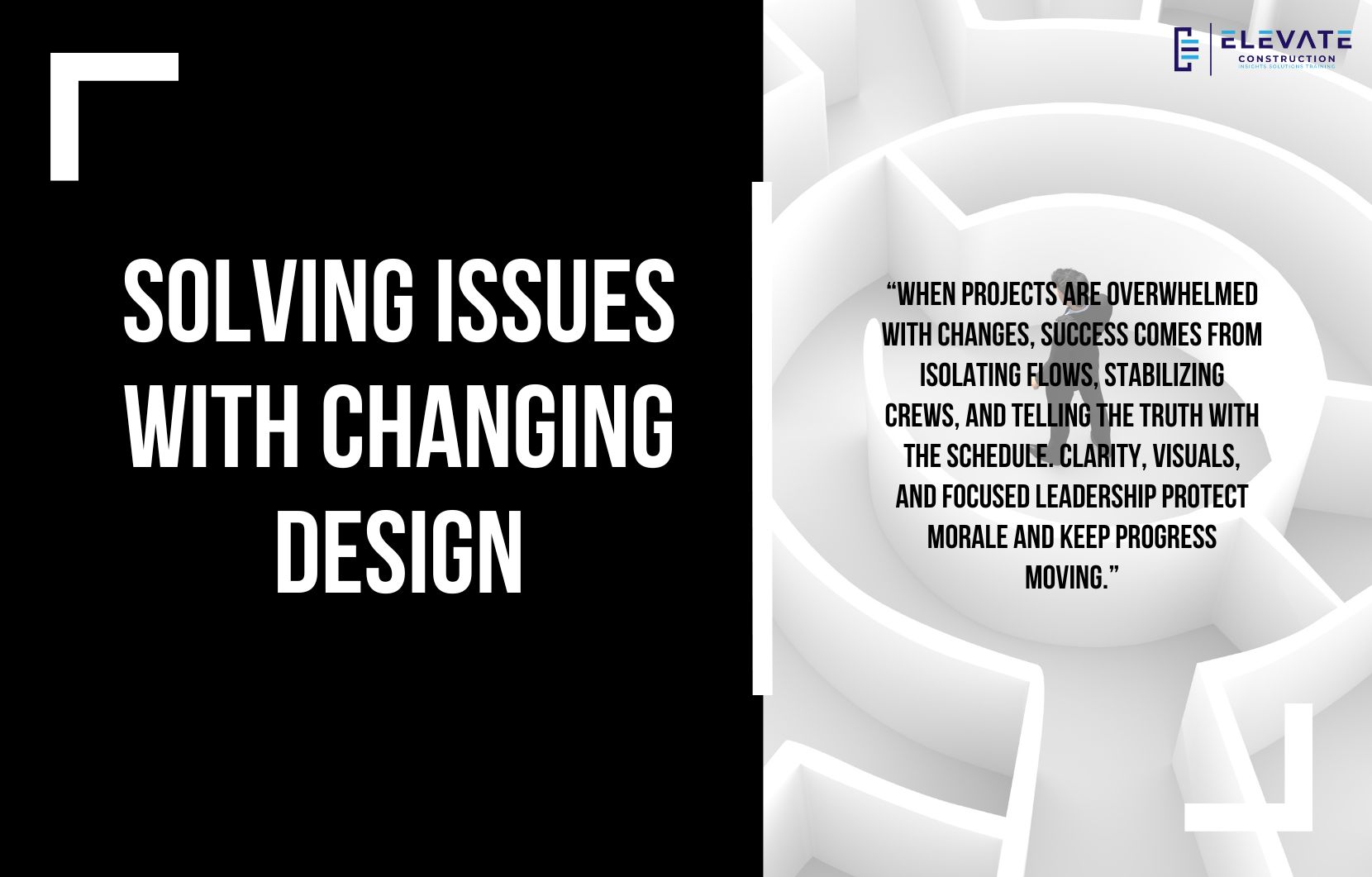In this blog, I dive into a live problem-solving discussion with a construction leader who is managing a highly complex project full of changes, RFIs, and design revisions. While I will not share names or company details, the conversation is deeply valuable for anyone facing the challenge of trying to maintain flow and momentum in the middle of constant changes.
This project started as a one-year build but has extended to nearly one year and ten months due to a flood of ASIs, RFIs, and design changes. Currently, about 60 percent of the work is approved, leaving the remaining 40 percent in flux. The complexity is around six or seven out of ten, with layers of design revisions on an existing structure. The team is struggling to create a schedule that adapts to shifting conditions while still maintaining productivity and morale.
When faced with this situation, the first insight is that the problem is not simply the time construction takes. The real root cause is change. Each change creates additional flows of work on top of the original plan, increasing work in process and stretching the project timeline. Lean construction principles teach us that higher utilization and more work in process always result in slower overall progress. The key is to stabilize work, isolate flows, and prevent the entire team from being overwhelmed.
We discussed breaking the work into flows. The first flow should represent the contract work that is clearly defined, approved, and supported by stable systems and a consistent team. This flow maintains morale and keeps crews focused on tasks they know will not shift. The second flow should absorb flexible changes wherever possible. By intentionally looping design changes into this flow, the team can address owner-driven revisions without disrupting the first flow.
I also recommended identifying a third flow for non-absorbable changes. These are changes that cannot be merged into the regular streams of work. In some cases, this may require a separate workforce or at least isolating those tasks on the maps and schedules so they do not interfere with the progress of the primary teams. The danger lies in trying to push all flows into one. That approach overwhelms crews, distracts project management, and results in catastrophic morale and productivity losses.
Visual communication is essential. Large maps under plexiglass or detailed blueprints marked with different colors help the team see clearly what belongs to the first flow, the second, or the change-driven third flow. This transparency empowers trade partners to know where they can proceed, where they must pause, and where changes will loop in later. Clarity reduces frustration, avoids wasted effort, and keeps momentum moving in areas that are stable.
Alongside mapping, the schedule must tell the truth. A master CPM schedule that shows optimistic finish dates without accounting for the increased work in process is misleading. Instead, trade flow or takt planning can provide a more honest picture. Crew tying activities and showing realistic flow extensions prevent false expectations. If the schedule says the project can finish in one year and ten months, but actual flow shows it extending beyond two years, that reality needs to be communicated. It is better to be transparent than to set the team and the owner up for disappointment.
The discussion also emphasized protecting the workforce and project management team. When crews feel hopeless because of constant changes, they either stop progressing, hide, or busy themselves with non-value work. Respect for people means respecting human nature and creating conditions where they can see a path forward. Isolating changes into distinct flows prevents them from being overwhelmed and keeps morale high. The project management team must also be shielded from drowning in change orders so they can maintain focus on contract work and stable systems.
To reinforce morale, we spoke about creating a rally cry for the team. Something simple but motivating like “Focus on contract first” or “We can do it.” Teams thrive when they share a unifying purpose and understand exactly what matters most. Visuals, color coding, and even simple markers in the field can reinforce this clarity, making it easy for workers to know what is safe to progress and what must wait.
Finally, we focused on huddles and planning rhythms. In times of heavy change, the daily huddle and weekly work plan become more important than ever. Crews need to see the next few days with clarity and know that leadership is actively managing procurement, approvals, and material flow. Longer lookaheads may be unstable, but locking in short-term solvency keeps everyone productive.
The discussion reminded us that schedules are demand-driven wish lists, while crew capacity and production flow are supply-driven realities. Aligning these two worlds is where honesty, success, and trust come from.
Key Takeaway
When projects are overwhelmed with changes, success comes from isolating flows, stabilizing crews, and telling the truth with the schedule. Clarity, visuals, and focused leadership protect morale and keep progress moving.
If you want to learn more we have:
-Takt Virtual Training: (Click here)
-Check out our YouTube channel for more info: (Click here)
-Listen to the Elevate Construction podcast: (Click here)
-Check out our training programs and certifications: (Click here)
-The Takt Book: (Click here)
Discover Jason’s Expertise:
Meet Jason Schroeder, the driving force behind Elevate Construction IST. As the company’s owner and principal consultant, he’s dedicated to taking construction to new heights. With a wealth of industry experience, he’s crafted the Field Engineer Boot Camp and Superintendent Boot Camp – intensive training programs engineered to cultivate top-tier leaders capable of steering their teams towards success. Jason’s vision? To expand his training initiatives across the nation, empowering construction firms to soar to unprecedented levels of excellence.
On we go

